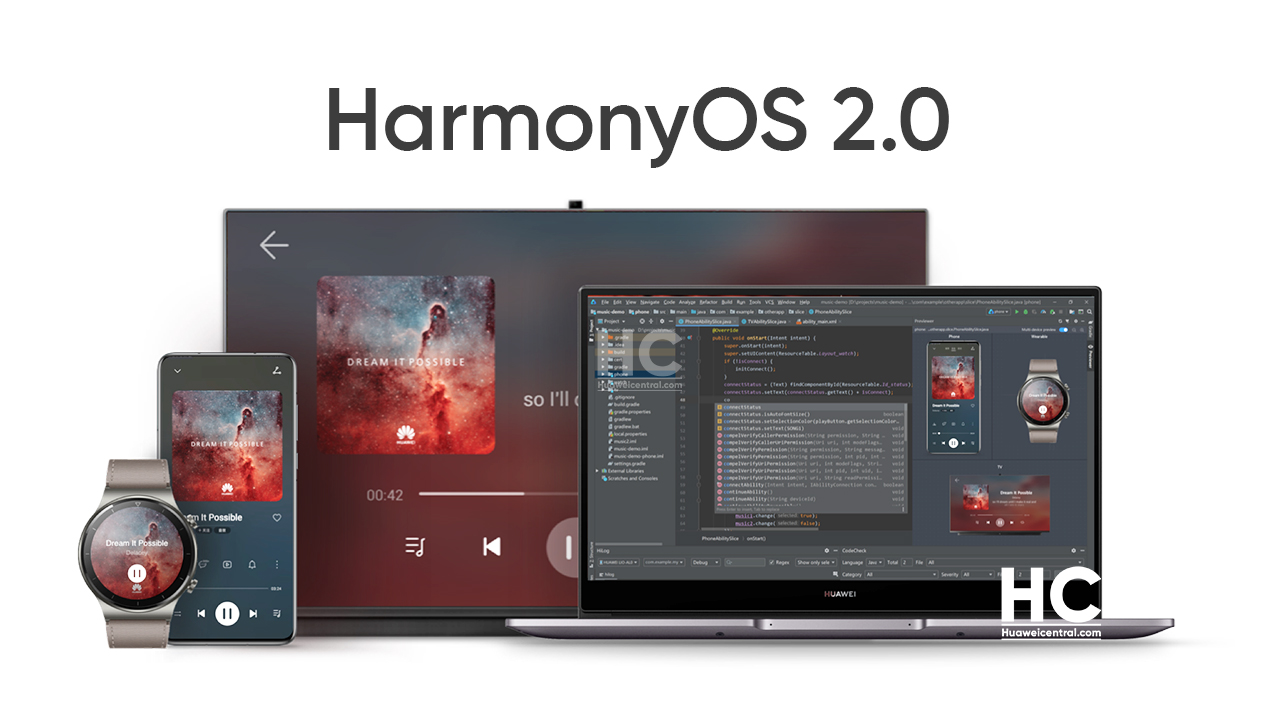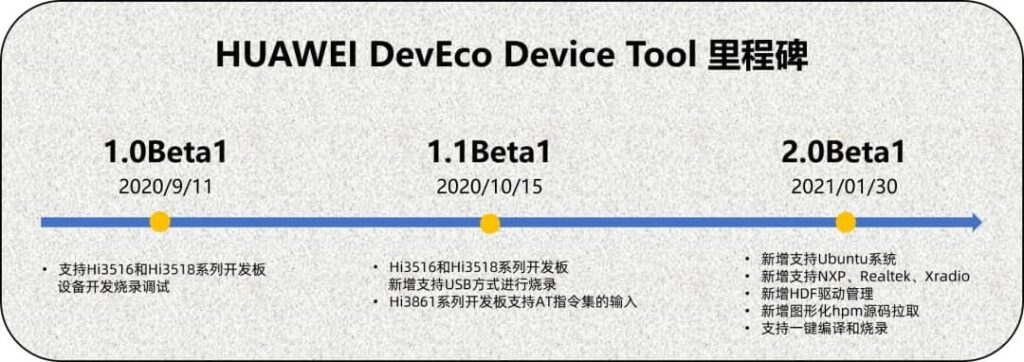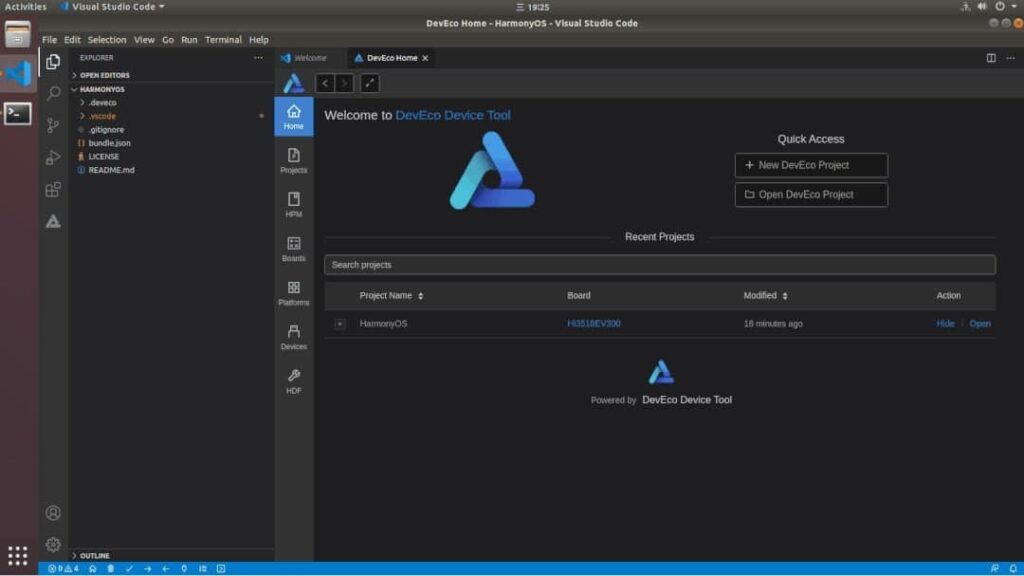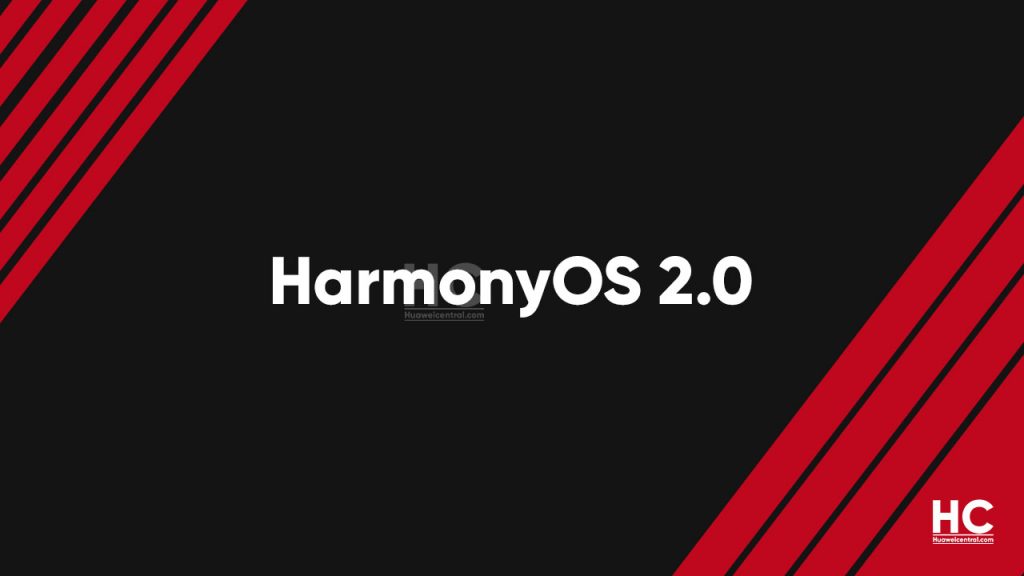HarmonyOS
Huawei DevEco Device Tool 2.0 Beta 1 for HarmonyOS 2.0 released with new features and improvements

HarmonyOS is Huawei’s self-developed distributed operating system, which is designed to deliver a new user experience across all devices and scenarios. On December 16, 2020, the company released the HarmonyOS 2.0 mobile developer beta version.
DevEco IDE is an integrated development environment provided by Huawei Technologies to helps app developers to leverage Huawei device HarmonyOS open capabilities.
Also, it is working as an Android Studio plugin and supports on-demand customization for HarmonyOS components such as C/C++ language code editing, burning, and debugging functions.
The current version offers the development toolsets for Huawei Hi AI capability, including HiAI Engine tools, HiAI Foundation tools, AI Model Marketplace, Remote Device Service.
Recently, Huawei has released the latest version of the DevEco device tool that comes with new features and optimization for the development environment preparation process and more.
Check the new version and features details mentioned below.
New version:
- Huawei DevEco device tool getting new version 2.0 Beta 1
Changelog:
- Added support for Ubuntu platform
- Added support for NXP, Realtek, and Xradio chips
- Added HDF driver management
- Added support for graphical download of HPM source code
- Support one-click compiling and burning
Download link: DevEcoDevice Tool 2.0 Beta 1

Let’s explore new features and improvements in detail:
New features
- The new Ubuntu system version supports functions such as project creation, source code pull, one-click compilation, burning, and debugging, providing a one-stop development experience.
- Added support for the programming function of tripartite development boards, including XNP, Realtek, and Xradio series development boards.
- With the addition of the HDF function, developers can manage and add device drivers through the HDF function of DevEcoDevice Tool, and general information such as driver directory structure, driver templates, codes, and header files with one click.
- The HPM function is added, and the HPM instruction set is integrated. Developers can directly obtain the components of the related solution through the DevEcoDevice Tool.
Enhanced features:
- Optimize the development environment preparation process, no need to manually install and set up JDK, Jlink, OpenOCD, and other tools and npm components, reducing the complexity of environment construction.
- Adapt to each development board, provide a default configuration scheme, and complete one-click compilation and burning without modification.
- Provides a one-key erase function for the entire device, and can also erase the specified partition.

[Via – ithome]








